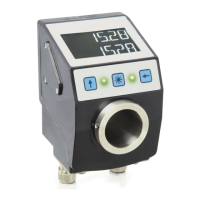Table 19: Emergency Error Code
The identifier of the emergency object is set to 80h + Node-ID by default; however, it can be
changed via object 1014 h (see 1014h: COB-ID Emergency Message). Transmission of an
emergency message is only possible in the "OPERATIONAL" or "PRE-OPERATIONAL" NMT
statuses.
5.5.2 Node Guarding
Node Guarding is available for failure monitoring of the CANopen network. During guarding,
the master transmits remote frames (RTR, remote transmit request, request message) on the
guarding identifiers of the nodes to be monitored. They respond with the Guarding message,
which contains the current NMT status of the node as well as a toggle bit whose value must
change with every message. If NMT status or toggle bit do not correspond with the value
expected by the master or if there is no response, then the master assumes a node error.
Via objects 100Ch (Guard Time) 100Dh (Life Time Factor), the time interval (Life-Time) is set
within which the NMT master expects to receive a message. The time interval "Life time" is
calculated from the cycle time "Guard time" multiplied with the factor "Life Time Factor". If
the NMT master receives no response to its RTR frame within the "Life-Time", it can react with
appropriate measures. After switching on, Node Guarding is activating by the master sending
the first RTR frame to the slave. If the value of either object (100Ch or 100Dh) is set to 0,
Node Guarding will be deactivated.
The node's response to the master's RTR frame is formed as follows:
Toggle Bit:
The toggle bit must alternate between two subsequent responses of the unit. After activation
of the Guarding protocol, the toggle bit must have the value 0 with the first response.
NMT status:
4: STOPPED
5: OPERATIONAL
127: PRE-OPERATIONAL
The identifier of the heartbeat protocol is permanently set to 700h + Node-ID and cannot be
changed. Sending of a Node Guard message is possible in the "OPERATIONAL",
"PREOPERATIONAL" or "STOPPED" NMT statuses.

